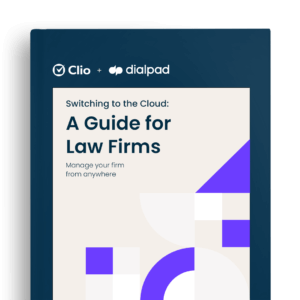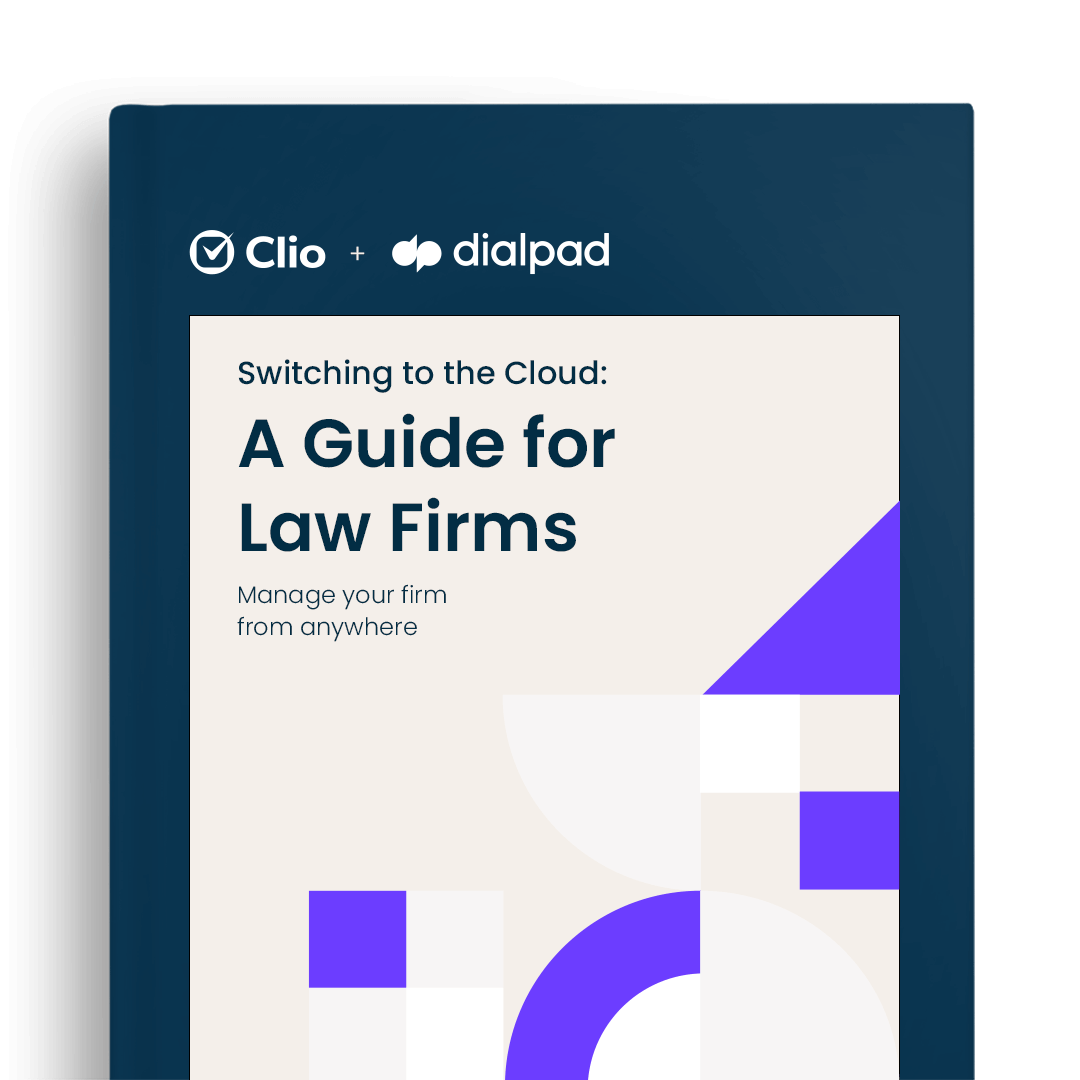Every year, the American Bar Association’s Legal Technology Resource Center (LTRC) conducts a survey of law firms to assess the technologies being used by legal professionals across the country.
The role of cloud technology for lawyers is to help you manage all of those things: accounting, communications, documents, calendaring, billing, marketing, and so on. Just as technology has changed the world of business, it too has changed the practice of law. But what technologies and software services are lawyers using to manage their practices to give themselves a competitive edge?
That’s pretty much the essence of the LTRC survey report, which covers a broad range of topics. Legal tech has come a long way. Of course, there are two areas of the report that are of particular interest to us: cloud computing and practice management. It is kind of our thing, afterall. Here’s an overview for your review (in case you don’t have time to read all 700 pages of data and analysis).
Cloud and SaaS technologies
Cloud computing and software-as-a-service (SaaS) models have taken off in the corporate world. Companies like Salesforce, Marketo, and Hootsuite have transformed the way marketing, sales, and business professionals connect with customers and prospects to build brands and profits. But lawyers have been somewhat hesitant to employ such services, even though they’re likely using cloud and SaaS technologies in their personal matters (email, banking, social media, etc.).
When asked in the 2014 survey if they use cloud or SaaS services in their practice, over a third (35 percent) of lawyers in solo practice and an equal amount in firms of 2–9 lawyers said they do. On that front, both groups are ahead of the curve: the entire sample of respondents reported that three in ten (30 percent) use such tools in their practice. Within the group of lawyers using cloud and SaaS services, a number of practices and practice solutions stand out.
First, the survey results showed that by practice area, the adoption rates of cloud services are as follows: corporate at 37.3 percent, commercial at 37.2 percent, real estate at 36 percent, and family law at 35.7 percent, intellectual property at 33 percent, litigation at 28.5 percent, labor/employment 25.9 percent, and general practice (civil) at 22.7 percent. Second, the specific products and solutions.
When asked what cloud providers they had used, the most popular consumer services included: Dropbox (59 percent), Google Docs (40 percent), iCloud (29 percent), and Evernote (19 percent). While significant cloud-based eDiscovery and legal research tools like Nextpoint and Fastcase did not seem to register with respondents as being cloud services, the most popular legal-specific cloud products named by respondents included the following list of practice management cloud services: Clio (16.5 percent), RocketMatter (3.4 percent), MyCase (1.7 percent), and Bill4Time (1.7 percent).
That’s a perfect segue into our next section: legal practice management solutions. But if you want to read what the LTRC report says about cloud computing in law offices, you can read it here.
Legal practice management (LPM) solutions
As Joshua Poje, Director of the LTRC, concluded: “Lawyers who spend their day juggling contacts, meetings, and documents all while trying to track their time, would be remiss if they didn’t stop to examine whether practice management software could help cut their headaches and help streamline their practice.” Yet surprisingly, there are a lot of lawyers who seem to like headaches and unstreamlined practices.
Results of the 2014 LTRC survey show that only half (49 percent) of respondents report having access to practice management software in their daily practice. For those lawyers that use legal practice management (LPM) solutions, it becomes the center of their practice. Nearly all LPM solutions offer a centralized platform for managing contacts, calendaring, time, billing, and other areas vital to a law practice. And nearly all lawyers use tech and software solutions to help them with each.
We’ll call out some highlights below, but you can also check out the LTRC’s report on practice management for more details. According to the 2014 survey results, 90 percent of respondents reported using contact management software of some sort, ranging from 85 percent among solo practitioners to 98 percent in large firms. Similarly, calendaring software appears to be available to lawyers at nearly all firms, with 94 percent reporting that as so. Practice and communicate all you like, however, but you’re going to want to get paid for all that effort.
Indeed, the practice and business of law lives up to the old adage that “time is money,” and survey respondents report that, on average, 72 percent of their fees are based on the traditional billable hour model. So, tracking time is still vital to law firms; and, 85 percent of survey respondents reported having a solution in place and 78 percent reported having available legal accounting software solutions. Even if you’re not billing on an hourly basis, it is still a good practice to record your time so you know whether or not you’re investing it wisely. Of course, much of the time and work in being a lawyer is spent in drafting, reviewing, and managing documents; being able to quickly and easily prepare, automate, retrieve, and manage documents is a proven time saver.
Yet the 2014 survey results show that only 62 percent of respondents have access to such software, with only 51 percent reporting having used it themselves. Drilling down a bit further, the survey results also show that such software is available to only 35 percent of solo practitioners, compared to 96 percent of respondents at large firms. By centralizing all of this into one neatly packaged but very potent platform, LPM solutions essentially become the command center of the firm—no matter the size—streamlining and integrating everything a firm needs without the need for a complex array of tools or a big bottle of ibuprofen. If you’re using an LPM solution, instead of headaches, you’ll find something much better: personal satisfaction.
Respondents who use practice management solutions in their firms report a high degree satisfaction with the products. The 2014 LTRC report shows that 85 percent are satisfied with their current solution and 33 percent are very satisfied. We’re delighted our own 2014 customer satisfaction report showed that 89 percent of lawyers who use Clio said they’d be likely to recommend it (55 percent very likely) to colleagues or friends.
Of course, not every lawyer appreciates the value of tech. Sure, you can manage your practice with a pen and paper just as you can still get your news from the newspaper, use a typewriter to draft contracts, or get paid in gold doubloons, but you wouldn’t be nearly as up to date as your competitors or as efficient with your matters and clients—and how many of them pay in doubloons?
Technology has helped to make business more efficient, more productive, more competitive, more customer focused, and ultimately, more profitable. The same is true with lawyers and law firms. And that’s basically the reason why the ABA studies the topic so extensively.
We published this blog post in December 2014. Last updated: .
Categorized in: Technology
Switching to the Cloud: A Guide for Law Firms
In this in-depth guide, we’ll cover everything you need to know about switching to the cloud, including actionable strategies to make the process seamless.
Get the Guide








